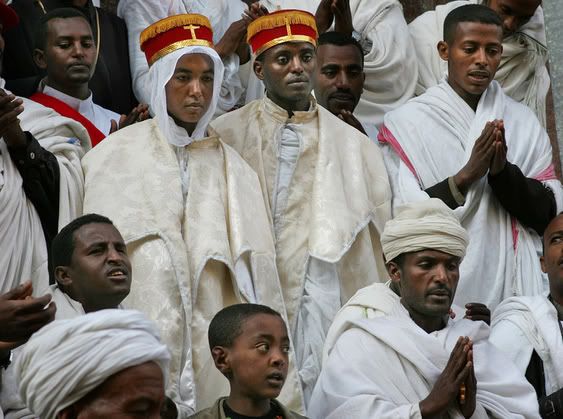Wow, lot of substantive replies.

I'd like to make the point that there's a distinction between being dark-skinned and being "Black." Dark-skinned is a rather large category that comprises plenty of other races like Indian.
Indicators of "Blackness" for Americans go beyond skin color, there are also other things like prognathous jaw and wide, flat nose.
I hope we agree that the American perception of Black facial features is stereotyped from the particular ethnicities of enslaved West Africans and not AT ALL representative of the racial diversity of Africa which has just as wide an array of ethnicities as the other continents.
However, the American perception is what's at issue here - we all agree that the Egyptians were Africans and dark-brown-skinned, the question is were they "Black," a label that only exists in the context of the phenomenon of "African Americans."
This Somali woman, Waris Dirie (who is a model like Iman) has dark skin yet more "Caucasoid" looking facial features. She doesn't look very Black to me.
Barack Obama, aside from being half white, also doesn't look particularly like the American stereotype of Black facial features.
If you recall, there was at one point a debate about whether Obama was "black enough" to win black votes - pretty silly and dumb, but it was based on him being of "African" heritage (i.e. East African) rather than "African-American" (i.e. West African ex-slave).
Anyway, compare 'Bama and Waris Dirie with some famous Black people with West African slave ancestry who do conform to that facial-structure stereotype.
This is the American image of "Blackness."
Now let's look at the Egyptians.
First, the Sphinx
undoubtedly has a protruding jaw: that is, the entire face below the nose protrudes past the vertical line of the forehead.
But the ancient Egyptians throughout their art did not depict THEMSELVES with prognathous, protruding jaws. Go back and look at all the pictures in this thread.
The artist makes a distinction between Nubian (#2) and Egyptian (#4) - aside from skin tone, the main distinguishing features are jawline, lips, and hair.
More ancient Egyptians:
The Egyptians saw their own distinguishing ethnic features as being - large straight triangular nose; large, widely spaced almond eyes; full "downturned" lips; slightly-reddish dark brown colored skin.
When you think about it, these features are vaguely Asiatic. Take away the skin tone:
and you have something that almost looks a little Korean. Here is Korean pop-star Rain:
Anyway, here is what is absent from Egyptian self-depictions: No prognathous jaw. No flattened nose. No full "upturned" lip (lol, see any picture of Jay-Z if you don't understand the lip type I mean). Those features of modern African Americans are totally missing in Ancient Egyptians.
Here are some modern Egyptians.
Gee, accounting for the fact that they have been ruled by Arabs for thousands of years, they look pretty "Egyptian."
Let's see some more modern faces. Here's what people from Sudan generally look like:
Not a match. Modern day Ethiopians are much closer.
Triangular noses, wide-set almond-shaped eyes, reddish-brown skin, downturned lips? All there.
Finally, looking at Somali faces (remember Waris Dirie and Iman as well):
The Egyptian art certainly looks more like modern Egyptians than modern Somalis. Somalis have much narrower faces and their noses are more thin than triangular.
So to sum up:
The ancient Egyptians:
Ethnically African? hell yeah
American "Black"? hell no
Modern African ethnicity that matches best? Probably Egyptian or Ethiopian imo
So Iman was not the best choice to play an Egyptian, but hey, better than Yul Brynner.








 This would be true is we were to follow an assumption that there was never any transcontinental African migration, and that each distinct type of African stayed in their own neat little corner of the continent. Hopefully you know that this assumption is highly false as evidence of the most extensive genetic study of African populations to date;
This would be true is we were to follow an assumption that there was never any transcontinental African migration, and that each distinct type of African stayed in their own neat little corner of the continent. Hopefully you know that this assumption is highly false as evidence of the most extensive genetic study of African populations to date;


 I'd like to make the point that there's a distinction between being dark-skinned and being "Black." Dark-skinned is a rather large category that comprises plenty of other races like Indian.
I'd like to make the point that there's a distinction between being dark-skinned and being "Black." Dark-skinned is a rather large category that comprises plenty of other races like Indian. 





















